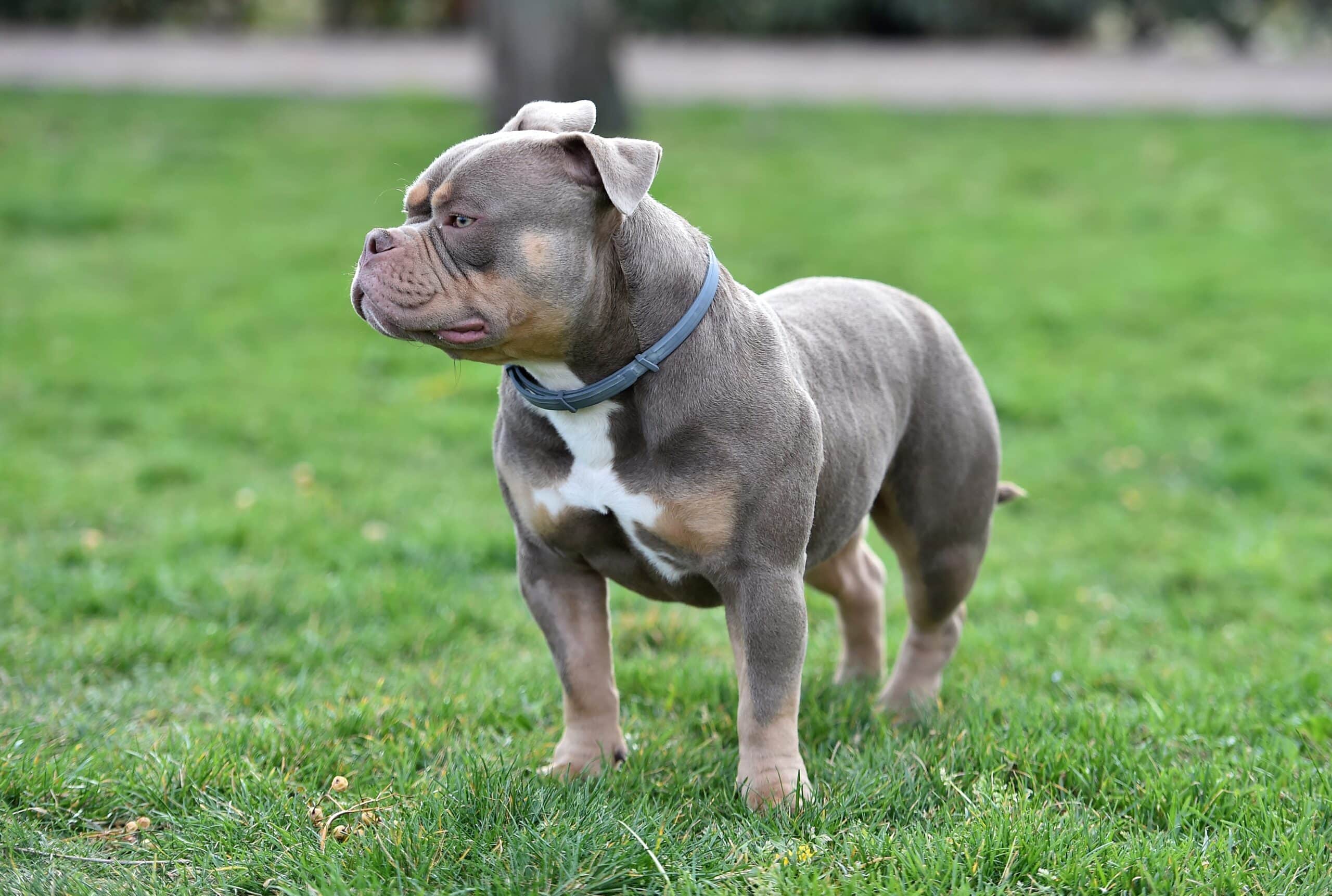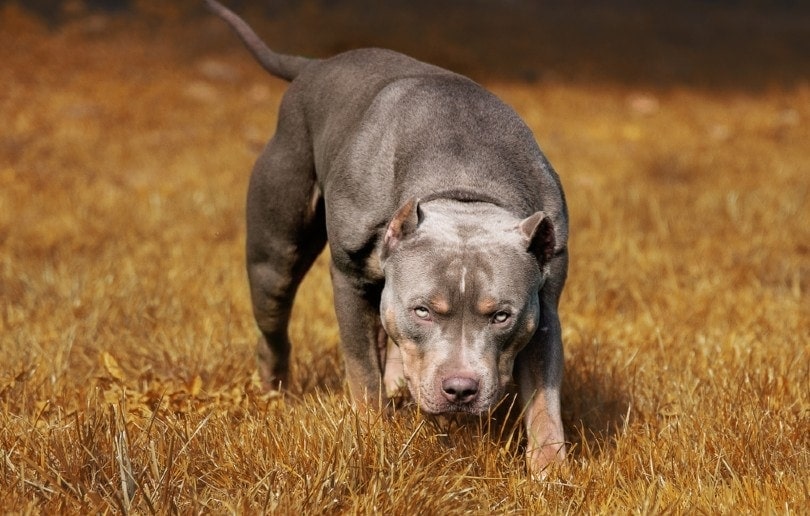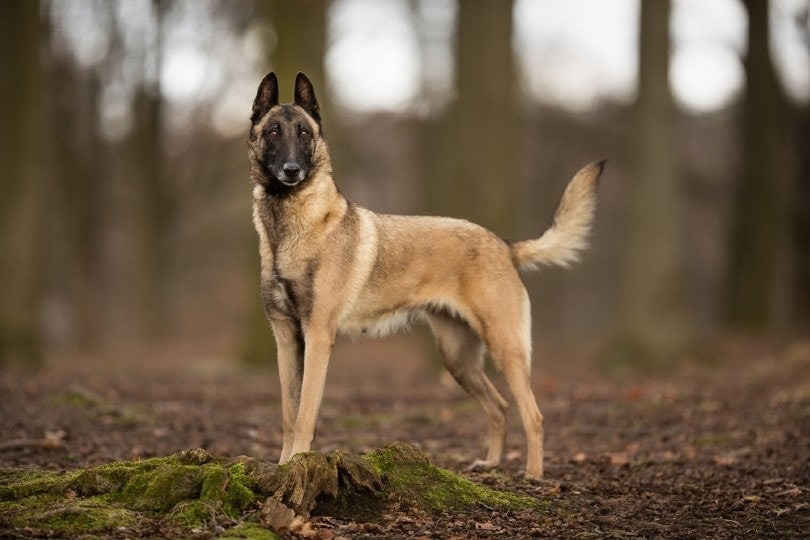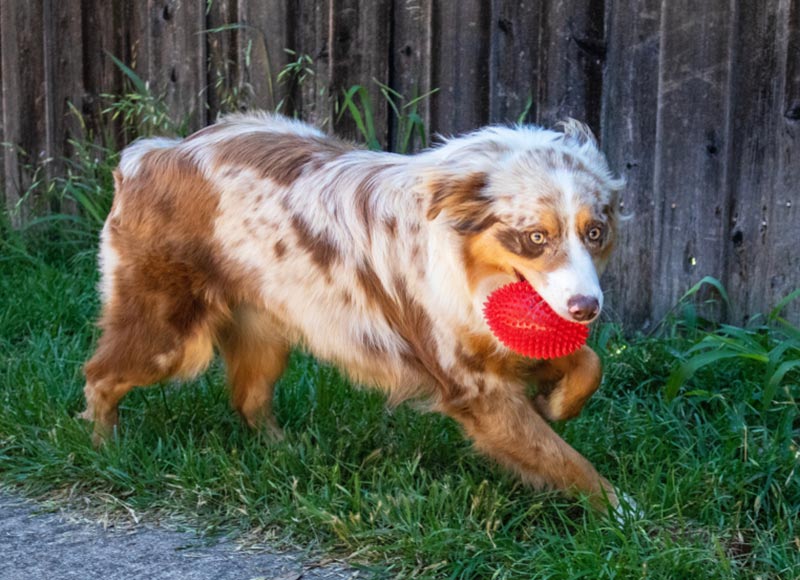Mexican Pitbull (Chamuco): Pictures, Facts, Origin & History
By Lorre Luther
Updated on

Mexican Pitbulls are small yet stunningly powerful dogs with lean muscles and taught lines. They’re also known as Chamucos. Their bodies bulge with thick, defined muscles. Chamucos are mixes of several breeds, including American Staffordshire Terriers and American Pit Bull Terriers. While affectionately called Mexican Pitbulls, dog registries don’t recognize the breed.
Chamucos were developed outside formal breeding channels during the 1970s and were associated with dog fighting for many years. However, many find Chamucos to be sweet, devoted, and loving dogs.
| Height: | Approximately 14 inches |
| Weight: | 25–40 pounds |
| Lifespan: | 8–15 years |
| Colors: | Several, including white, brown, and black |
| Suitable for: | Experienced dog owners with time to provide sufficient exercise, attention, and consistent socialization and training |
| Temperament: | Loving, confident, and protective |
Chamucos are often devoted and confident pets, but their personalities can be difficult to predict because they were primarily developed outside formal breeding programs. Training and good socialization are essential to teaching these intelligent dogs the proper ways to engage their instincts. Most do best with consistent reward-based training methods.
 Chamuco Characteristics
Chamuco Characteristics
The Earliest Records of Chamucos in History
Chamucos are mixes of several dog breeds, including American Bulldogs, American Staffordshire Terriers, Stafford Bull Terriers, and American Pit Bull Terriers, but other breeds have likely been added to the mix over time. They first appeared in 1970 and were primarily associated with dog fighting.
Chamucos have yet to be recognized by any dog fancy organization or breed registry. However, they’re related to breeds that have been around for quite some time! The United Kennel Club (UKC) recognized the American Pit Bull Terrier in 1898, and American Staffordshire Terriers were acknowledged by the American Kennel Club (AKC) in 1936.
How Chamucos Gained Popularity
Chamucos are relatively rare and far less popular than other dogs initially bred in Mexico, such as sweet, loveable Chihuahuas. Because they’re not an acknowledged breed, it can be challenging to find reputable breeders working with these dogs. Chamucos’ association with dog fighting and tendency towards aggression may also contribute to the relative lack of interest in these animals.
Why Are Chamucos Considered a Bully Breed?
Chamucos aren’t technically an official breed, but they’re considered a bully breed because they’re descended from American Pit Bull Terriers, American Bulldogs, and Stafford Bull Terriers—all of which are bully breeds. The term refers to a group of muscular dogs believed to be related to ancient Greek Molluser dogs.
But modern bully breeds range from relatively small Boxers to enormous Great Danes. The group includes amiable, loving lap dogs like Pugs and animals with serious guard and fighting dog chops like Cane Corsi and American Pit Bull Terriers.
 Top 4 Unique Facts About Chamucos
Top 4 Unique Facts About Chamucos
1. Chamuco Means Devil
Chamuco means devil or evil spirit in Spanish. Some suggest the name was chosen to reflect the dogs’ tenacity as fighters.
2. They Were Bred As Fighting Dogs
Chamucos are pretty rare today, and the breed may be facing extinction. Their heritage as fighting dogs is sometimes cited as one of the reasons these amiable creatures have never become popular companion animals.
3. Chamucos Are One of Five Native Mexican Breeds
There are five dog breeds native to Mexico: Chihuahuas, Xoloitzcuintlin, Chamucos, Chinese Crested dogs, and Calupohs. According to the AKC, Chihuahuas were the 37th most popular pedigree dogs in the US in 2021. Xoloitzcuintlin, or Mexican Hairless dogs, have been around for centuries and are Mexico’s official national dogs.
4. They’re Just One of Several Breeds and Mixes Commonly Called Pitbulls
Pitbull is a term often used to describe several breeds. There are more than 10 breeds often referred to as Pitbulls, including American Pit Bull Terriers, Red Nose Pitbulls, Staffordshire Bull Terriers, American Staffordshire Terriers, Bull Terriers, and Stuffawlers.

Do Chamucos Make Good Pets?
Some owners swear their Chamucos are sweet, devoted, gentle, and well-behaved companions, often becoming extremely attached to children. But there’s not much solid information about these animals as they’re a relatively new breed and aren’t recognized by most dog registries.
Chamucos have largely been developed outside of standard breeding programs; they’re essentially mixes of several breeds with high prey drives and incredibly powerful bites initially created as fighting animals.
Reputable breeders select for temperament in American Staffordshire Terriers, American Pit Bull terriers, and other bully breeds. Emphasis is placed on developing loving, patient pets able to keep their territorial and aggressive tendencies under control. However, Chamucos don’t have the same advantage.
Chamucos often do best with experienced dog owners comfortable with taking charge of their dog’s socialization and training. They’re usually best suited for homes without small children and other pets.
 In Conclusion
In Conclusion
Chamucos are small yet mighty dogs. Their compact, taught bodies burst with defined muscles. Chamucos first emerged in the 1970s and were originally associated with dog fighting. They’re most likely mixes of several breeds, including Mexican Bulldogs, American Bulldogs, Boxers, and American Staffordshire Terriers.
Because of their heritage and initial selection for aggression, Chamucos often do best with early socialization and consistent positive training, as they’re incredibly smart, eager to please, and happy to learn.
Featured Image Credit: alberto clemares exposito, Shutterstock
 Chamuco Characteristics
Chamuco Characteristics Top 4 Unique Facts About Chamucos
Top 4 Unique Facts About Chamucos









